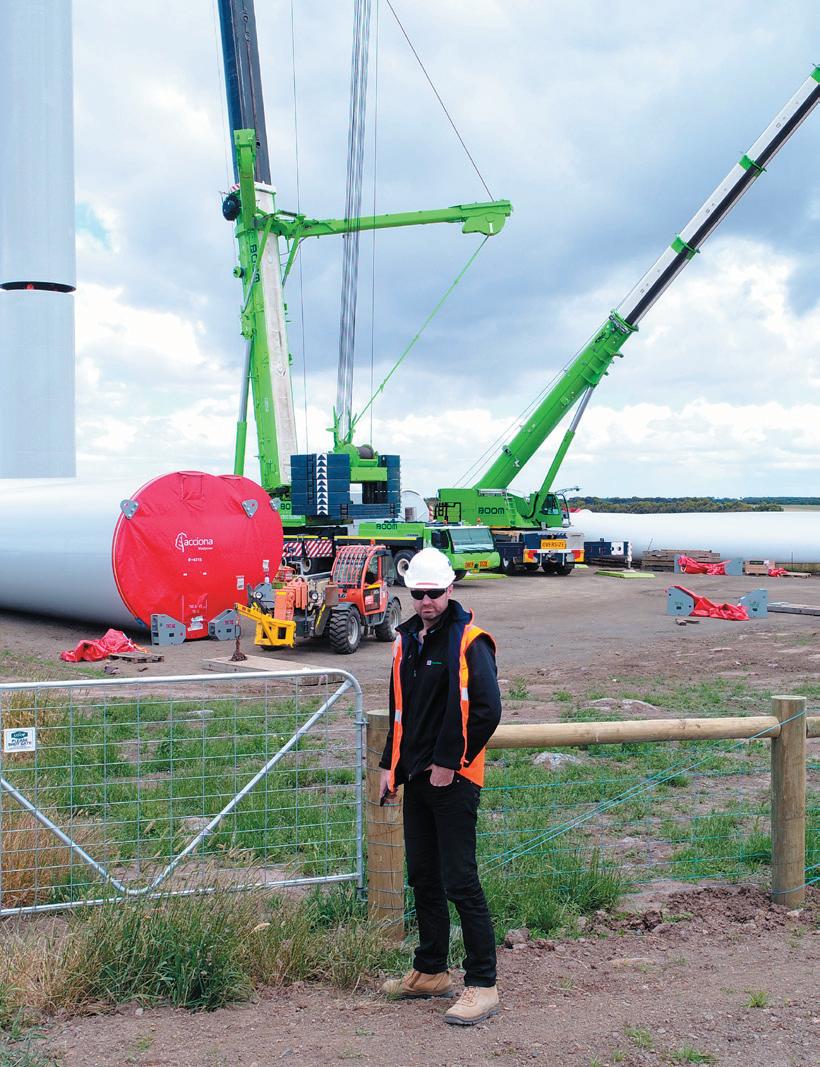
3 minute read
PEOPLE PROFILE
John Humphries
John Humphries The Crane Industry Council of Australia
Advertisement
John Humphries has been part of The Crane Industry Council of Australia since June 2016. With a long career history as an automotive test engineer with General Motors, John moved into design and development for chassis and air induction components. Searching for a new challenge in a new industry, he applied for the Safety Liaison (Victoria/Tasmania) role at CICA to make a difference to the lifting industry through safety improvements, while serving the members of the association. We caught up with John to learn more about his passion for safety and his motivations for building an effective safety culture in the crane industry.
What area of crane safety are you most passionate about?
Reducing preventable incidents through education and awareness. I am also interested in identifying safe crane configurations and journey routes, in order to move our cranes around the road network in a way that is sustainable and safe.
What do you think is the most important issue in crane safety today?
Skill level and attitudes. 50% of the current crane operator and rigging licence holders are over 50 years old and due to retire soon. Safety comes from experience and knowledge, and we are faced with a significant shortage of experienced operators. These men and women are crucial for passing on invaluable experience, knowledge and a healthy respect for safety. All this is at a time when infrastructure works and construction are in an unofficial ‘boom’.
Tell us about the most important lesson learned you have come across in your crane safety experience. How have you implemented these learnings since this experience?
Everything is dangerous in some way. Cranes do not cause accidents, nor do soft-slings, kitchen knives, lawnmowers or nail guns. It is the misuse of equipment that causes accidents, whether this is from lack of training or
education, a disregard for safety measures or human error. The most crucial aspect of safety is the operator, or more specifically: training, skills, attitude and health. I have learnt that by focussing on these, we have the best chance of avoiding incidents.

As a leader yourself, what do you see as the key attributes and behaviours for an effective safety leader?
I think you need to look at the root causes of problems, not just react to the symptoms. Then be proactive about implementing effective long-term fixes. When something goes wrong, we shouldn’t just ban a piece of equipment or stand someone down. Communicating findings is important as well as implementing lessons learned, but that is often missed due to legal and insurance complexities.
How do you help to build an effective safety culture? What do you think are the keys to an effective safety culture?
A safety culture needs to come from the top down, and workers need to be given the right guidance, equipment and time frames to operate safely. An effective reporting channel needs to exist where concerns and feedback are fed back up the chain so that real change is implemented.
How do you see technology playing a part in improving safety outcomes in the crane industry?
Computers already play a huge role in determining the maximum load, radius and height a crane with multiple configurations can lift safely. I see a huge opportunity for using complex swept path turn modelling and bridge assessments for optimising safe road access. There are fantastic crane operator Virtual Reality systems in development that may one day be a significant part of operator training in the same way that simulators are for airline pilots.
What’s the best advice you have for other safety professionals in the industry, or for people looking to become a safety professional?
Talk to as many people as you can, you don’t know what you don’t know.










